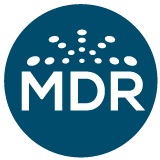 There is a powerful force at work in our schools and communities. A force with the reach, authority, and trust to engage youth, change behavior, champion a cause, build brand awareness, and evangelize for products.
There is a powerful force at work in our schools and communities. A force with the reach, authority, and trust to engage youth, change behavior, champion a cause, build brand awareness, and evangelize for products.
That force is teachers, and when it comes to introducing an offering or a message into a district, brands and nonprofits should understand that the teacher’s role is evolving and that evolution creates an opportunity for you.
Wide Circles of Influence
A teacher’s reach extends far beyond the classroom. When you calculate the average number of students in a class, the average length of a teaching career, and the total number of K-12 teachers in the U.S., teachers can impact over 633,077,200 students. Add to that the fact that information from the classroom makes its way home to families and communities, and you see how far-reaching and influential a message in a teacher’s voice can be.
Educators are on a mission, and they take decisions that impact “their kids” seriously. Teachers share their classroom experiences, and use social media as a virtual staff room. When they find something that works, they spread the word—and to other teachers that word is gospel. According to MDR’s research, when it comes to purchasing decisions on instructional materials, 75% of teachers trust the recommendation of other educators.
In educational technology, capital and infrastructure purchases are still the province of districts. But, with schools increasingly moving to provide students with their own laptop computer, netbook, or digital tablet and more free or low-cost apps popping up every day, the hurdles for teachers to try out a new software with their students are much lower. About 82% of U.S. classrooms have access to a reliable wireless connection, making free downloads and apps another possible avenue for getting a product or message in front of teachers and students.
The Expanding Roles of Teachers
Teachers today juggle many different responsibilities in their classrooms. In addition to daily instruction, they now write curriculum, research Open Educational Resource options, manage multiple student devices, and purchase classroom materials. Where once educational materials and technology for a school were acquired through a formal purchasing process, often only at the district level, now teachers are active participants in the conversation.
One-size-fits-all curricula have given way to innovative approaches like personalized instruction, flipped classrooms, and a tidal wave of technology options. The move away from a centralized, top-down model for instruction has opened the door for teachers to take on more responsibility for identifying, test-driving, evaluating, and advocating for what comes into their classrooms, be it a new product, or an outreach message.
Teachers also invest considerable time developing their own instructional materials; on average teachers spend seven hours per week searching for free and paid-for resources, and five hours creating their own materials, according to EdNET Insight research. Providing teachers with ready-made and easily adoptable materials is a smart way to win their appreciation, and raise awareness or disseminate a message.
For example, a fire safety awareness campaign, designed for easy adoption with a teacher website, interactive children’s apps, educational music videos, an eBook, and interactive lessons, was successful in reaching nearly all U.S. elementary schools and prompted more than two million downloads of fire safety materials into classrooms. Teachers were an effective messenger for the fire safety campaign because they are trusted in their communities. Making teachers the voice for a community outreach effort allows you to “borrow” their trust and authority for your message.
Engaging with teachers could add 1.7 million people as potential targets and, importantly, trusted messengers for your message. As purchasers, as influencers, and as community leaders, teachers can be a powerful force for brands and nonprofits looking to make inroads into schools.
To learn more about teachers and the education marketplace, check out MDR’s annual State of the K-12 Market Report, which addresses current education market trends as viewed from the district level, as well as school trends based on principals’ and teachers’ perspectives.
 About MDR: MDR is an integrated marketing services agency with unique digital, creative, and branding capabilities for the education channel. The company leads the education industry in helping clients achieve their business goals by connecting with targeted educator audiences through research and market intelligence, a world class school database and the following multi-channel digital communities: WeAreTeachers, WeAreParents, School Leaders Now, Schooldata.com, and EdNET.
About MDR: MDR is an integrated marketing services agency with unique digital, creative, and branding capabilities for the education channel. The company leads the education industry in helping clients achieve their business goals by connecting with targeted educator audiences through research and market intelligence, a world class school database and the following multi-channel digital communities: WeAreTeachers, WeAreParents, School Leaders Now, Schooldata.com, and EdNET.

